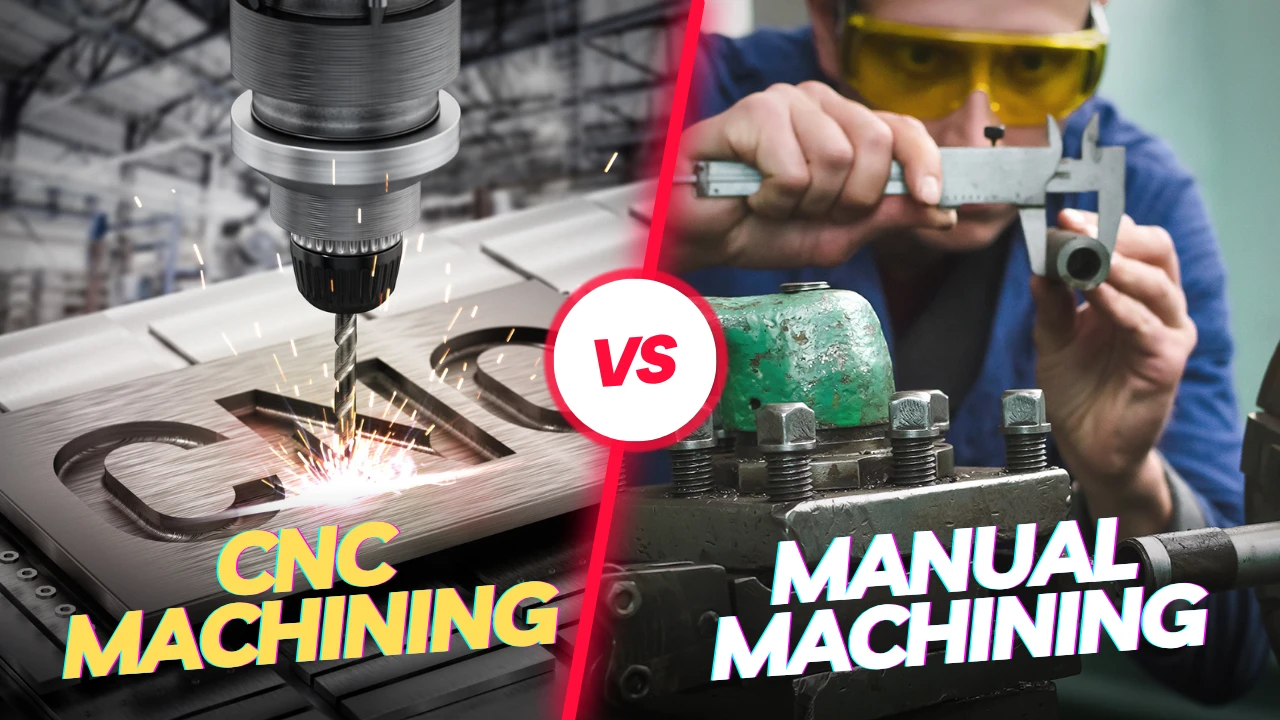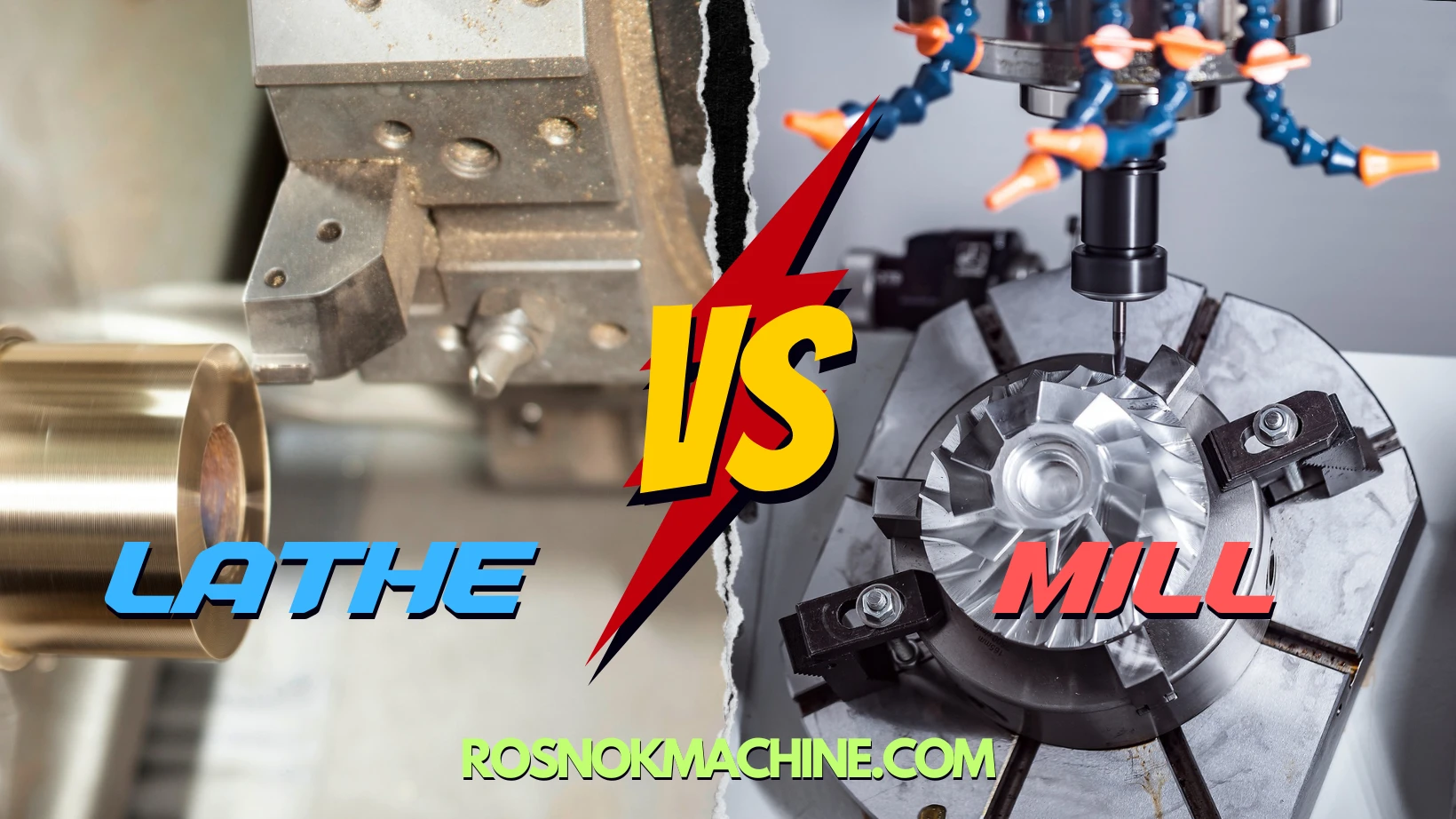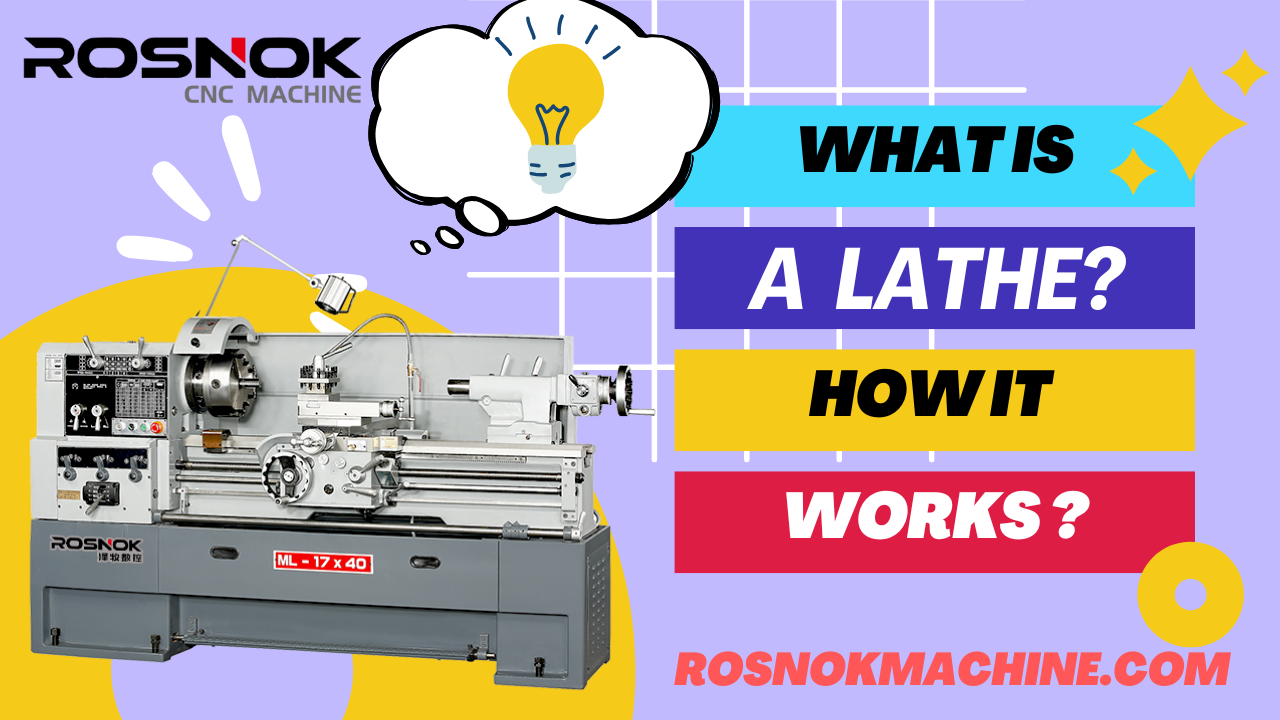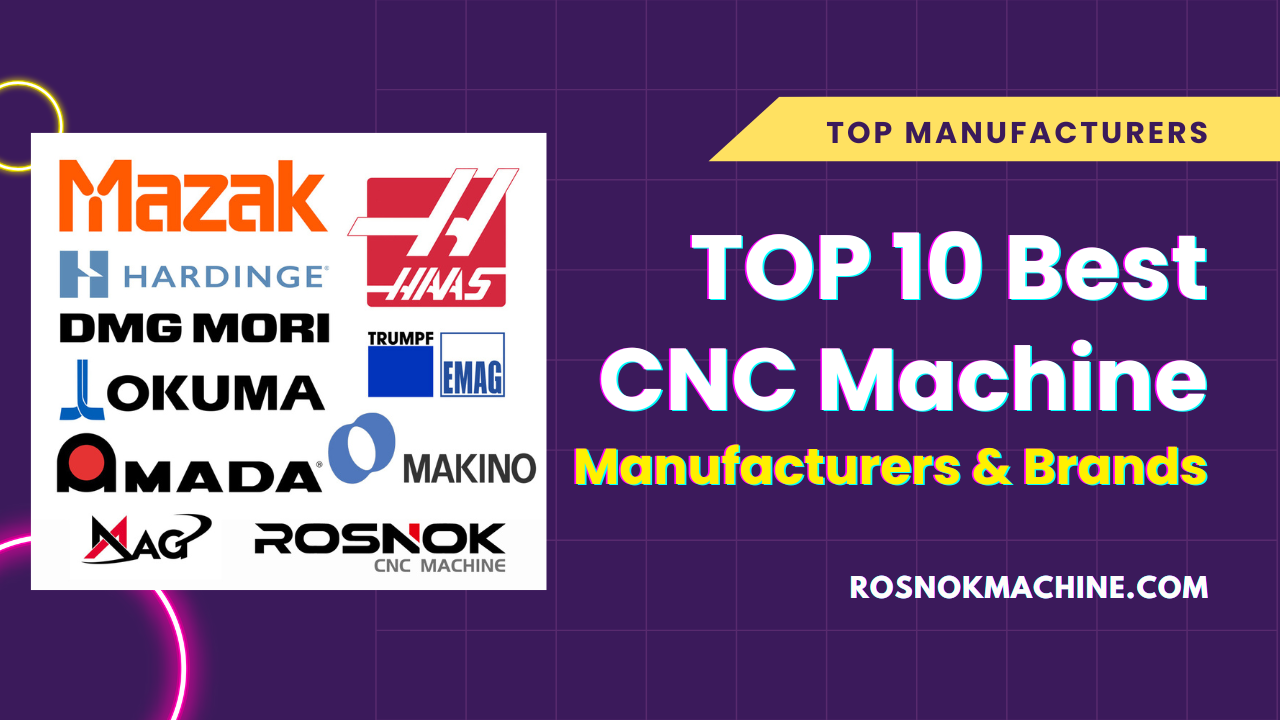Have you ever wondered what truly sets CNC Machining vs Manual Machining apart in today’s manufacturing world? Do you want to know which delivers higher precision, faster turnaround, and better cost efficiency? Are you curious which method adapts better to complex designs, tight deadlines, and evolving customer demands?
In CNC Machining vs Manual Machining, CNC dominates in precision, consistency, and efficiency. CNC systems use computer-driven servo motors and ball screw assemblies to execute programmed tool paths with micron-level accuracy—perfect for intricate geometries and mass production. Manual machining, by contrast, depends entirely on the machinist’s control over feed rates, tool movement, and tolerances. While it offers flexibility for quick changes and low-volume work, it can’t match CNC’s speed or repeatability in high-volume, tight-tolerance manufacturing.
Continue reading to discover how CNC Machining vs Manual Machining compare in precision, speed, cost, flexibility, and real-world applications—so you can choose the right method for your projects.
Introduction to CNC Machining vs Manual Machining
In manufacturing, CNC Machining vs Manual Machining represents two distinct approaches to shaping metal and other materials. CNC machines follow computer-generated instructions to produce parts with high precision and repeatability, while manual machines rely on the skill and judgment of the operator. Understanding the differences between these two methods is essential for anyone looking to optimize production efficiency, maintain quality, and choose the right equipment for specific jobs.
Defining CNC Machining
CNC machining is a process where cutting tools and machine movement are controlled by a programmed computer system instead of manual handwheels or levers. A part’s CAD model is converted into tool paths through CAM software, which are then executed by servo motors driving ball screw assemblies. This combination ensures smooth, accurate positioning, often achieving micron-level tolerances. Common CNC equipment includes machining centers, turning centers, milling machines, and Swiss-type lathes. These machines can perform multiple operations in a single setup, support automated tool changes, and handle complex geometries efficiently in both small and large production runs.
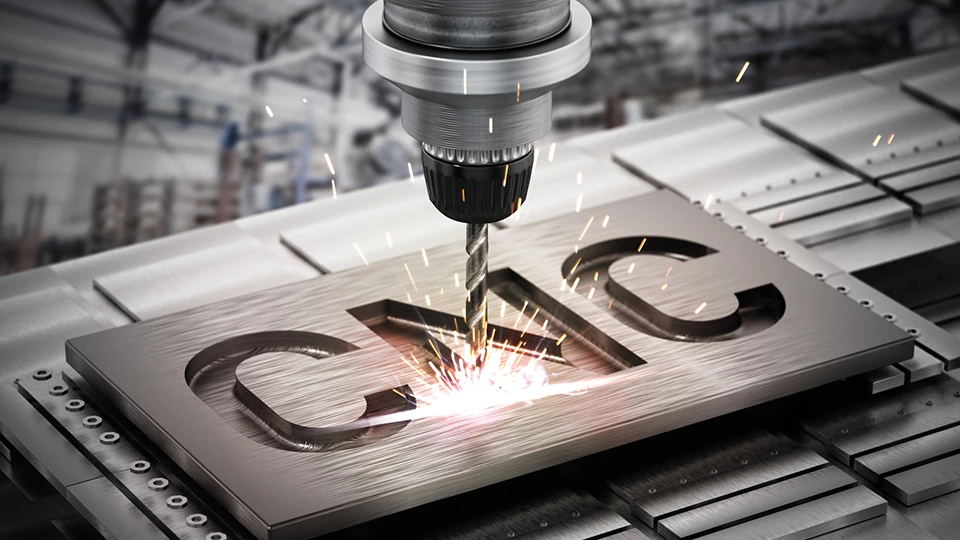
Defining Manual Machining
Manual machining depends entirely on the machinist to control every movement of the cutting tool. Motion is applied through handwheels and levers, and mechanical transmission systems—such as lead screws and gears—translate the operator’s input into tool travel. Manual lathes, knee-type milling machines, and drill presses are typical examples. This method is valued for quick setups, low operating costs, and flexibility. It is especially useful for one-off parts, repairs, or jobs where creating a CNC program would take more time than the machining itself.
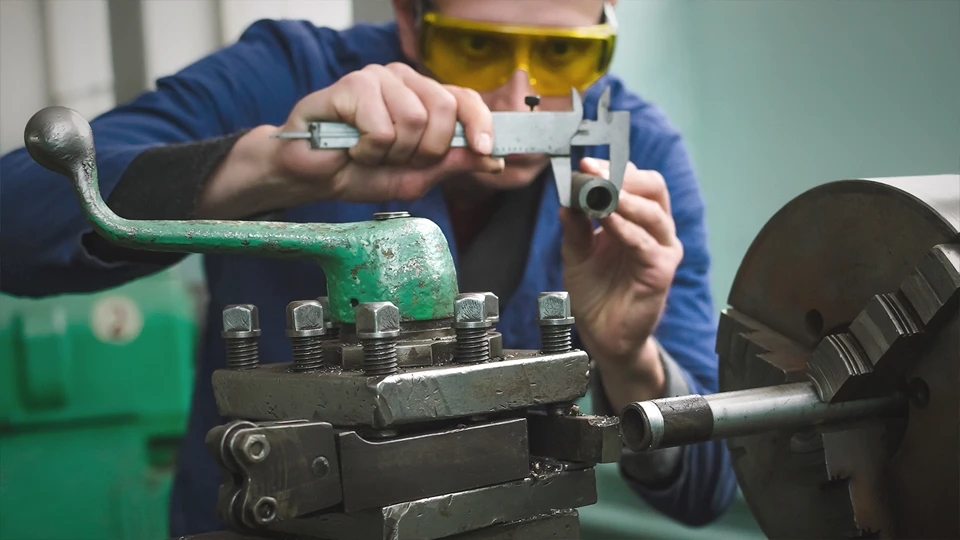
How the Industry Uses Both
In real-world manufacturing, CNC Machining vs Manual Machining is rarely an either-or decision. Many shops use CNC machines for high-volume, precision-critical components, while keeping manual machines for small batches, prototypes, and urgent repairs. CNC delivers speed and consistency, making it ideal for repetitive production. Manual machining offers adaptability, enabling machinists to make quick adjustments or fabricate custom parts without reprogramming. Combining both methods allows manufacturers to balance efficiency, accuracy, and flexibility across different projects.
Core Technical Principles Compared
The way CNC Machining vs Manual Machining operates at its core determines their strengths and limitations. CNC machines use automated control systems to translate digital designs into precise cutting actions, while manual machines depend on the machinist’s direct input to shape the workpiece. Understanding these underlying principles helps explain why CNC delivers unmatched consistency in mass production, and why manual machining still holds value in certain applications.
Motion Control Mechanisms and Precision
CNC machines follow programmed instructions to move each axis, using servo motors and ball screw assemblies to provide smooth, accurate positioning. This design minimizes backlash and allows micron-level accuracy throughout the production run. Many CNC systems use closed-loop control, where feedback from encoders verifies that the commanded position matches the actual position, further enhancing precision. In manual machining, all movement is generated by the operator through handwheels and levers, with mechanical linkages like lead screws transferring motion to the cutting tool. Precision depends on the operator’s steadiness and the machine’s mechanical condition, meaning slight variations in feed or pressure can lead to dimensional differences.
Tool Path Generation and Limitations
In CNC machining, tool paths come directly from CAD models and are processed through CAM software. The resulting program defines every aspect of the cut, from entry points to feed rates, enabling complex geometries, multi-axis operations, and efficient material removal with minimal waste. In manual machining, the machinist physically guides the tool along the desired path. This method works well for straightforward shapes but struggles with compound angles, intricate curves, or 3D surfaces that require exact, repeatable movements.
Tolerance and Repeatability
Tolerance control is a key advantage of CNC machining. Once a program is validated, the machine can maintain the same dimensions and surface quality for hundreds or thousands of parts without adjustment. This repeatability is vital in aerospace, medical, and automotive industries, where every component must meet strict specifications. In manual machining, tolerances rely heavily on the machinist’s skill and concentration. While an experienced operator can produce a single precise part, achieving the same result consistently across a batch is far more challenging.
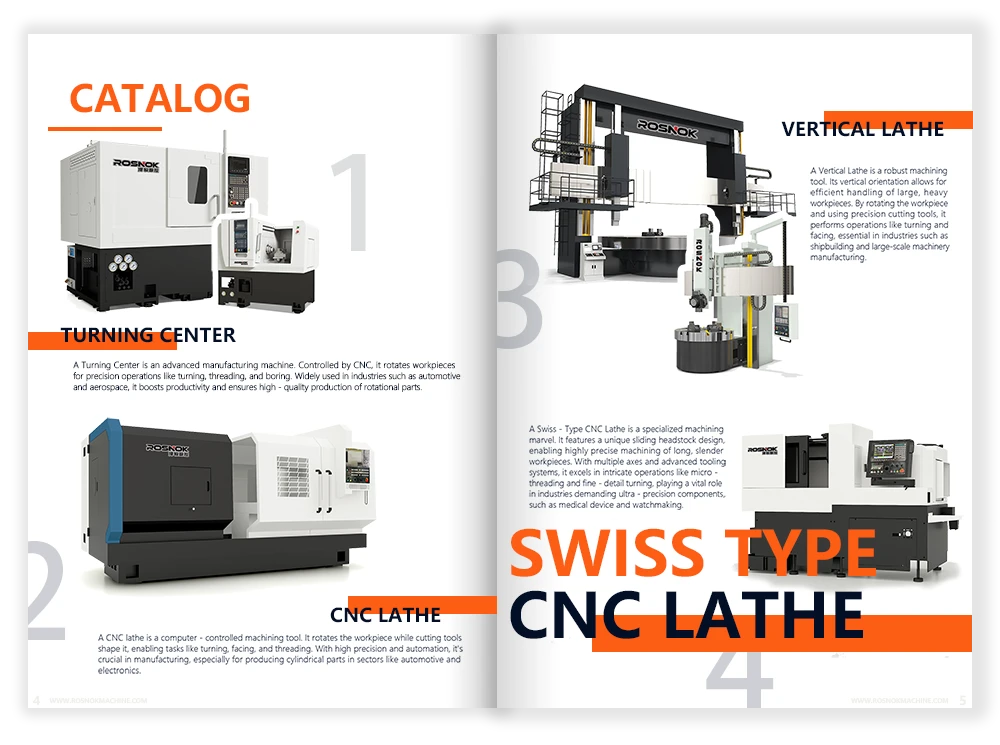
Performance Comparison – CNC vs Manual Machining
Evaluating CNC Machining vs Manual Machining through real production metrics helps clarify their strengths and trade-offs. This section focuses on three critical factors: precision and surface finish, speed and throughput, and the ability to handle complex geometries.
Precision and Surface Finish
CNC machines maintain high precision by controlling spindle speed, feed rate, and tool position through automated feedback systems. Features like tool wear compensation and thermal stability control keep cutting conditions consistent from the first part to the last. This results in uniform tolerances and excellent surface finishes, even on challenging materials. Typical CNC processes can achieve surface roughness between Ra 0.8 and 3.2 micrometers without secondary finishing. In manual machining, surface quality and dimensional accuracy depend on the machinist’s skill and consistency. Factors such as tool sharpness, operator fatigue, and feed stability can cause subtle variations in finish and tolerance, especially in longer runs.
Speed and Throughput
CNC machining excels in reducing cycle times. Automatic tool changers (ATCs) can switch between multiple tools without manual intervention, while multi-axis configurations perform several operations in one setup. This eliminates the need for repositioning workpieces and reduces idle time between cuts. Manual machining requires stopping the spindle, changing tools by hand, and realigning the workpiece for different operations. These steps add significant time to each part’s production, making manual processes less efficient for high-volume orders.
Complex Geometry Capability
CNC technology enables the production of intricate parts with compound curves, deep cavities, and multi-surface contours. With 4-axis and 5-axis machining, tools can approach the workpiece from multiple angles, reducing the need for secondary setups. Manual machining is limited by the fixed positioning of the tool and the operator’s ability to control complex movements. While experienced machinists can produce impressive results, certain geometries—such as undercuts or freeform surfaces—are impractical without CNC capabilities.
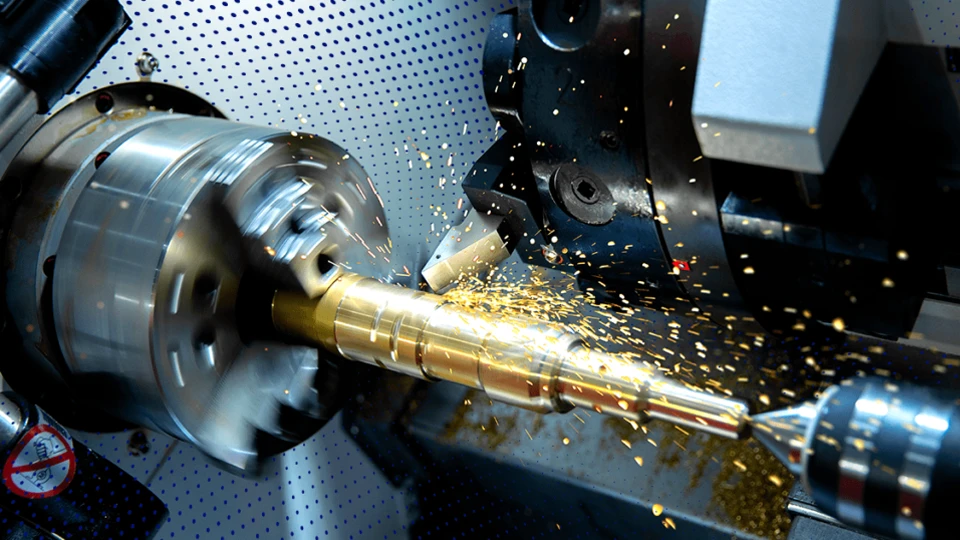
Cost Factors in CNC vs Manual Machining
When comparing CNC Machining vs Manual Machining, cost is one of the most critical factors influencing a company’s equipment decisions. Both short-term and long-term expenses must be considered, along with the potential return on investment based on production needs.
Initial Investment and Setup Cost
CNC machines generally require a higher initial investment. The purchase price reflects advanced components such as servo drives, ball screw assemblies, control systems, and automated tool changers. In addition to the machine itself, costs include CAD/CAM software, operator training, and setup time for programming and calibration. Manual machines are far less expensive to acquire and can be operational shortly after delivery, requiring only basic alignment and tooling. This lower entry cost makes manual equipment attractive for workshops with limited capital or specialized one-off production needs.
Operational and Labor Costs
Operational expenses differ significantly between the two methods. CNC machining can run with minimal supervision once a program is validated, allowing for lights-out manufacturing during night shifts. This reduces labor costs and maximizes machine utilization. Energy consumption per part is typically lower for CNC when producing in volume, due to optimized cutting parameters and reduced idle time. Manual machining requires continuous operator involvement, from positioning the workpiece to controlling feed rates and tool changes. This higher labor demand translates into greater ongoing costs, especially for repetitive work.
ROI Based on Production Scale
Return on investment depends heavily on production volume and complexity. In high-volume manufacturing, CNC machines pay back their cost quickly through reduced cycle times, consistent quality, and lower scrap rates. For example, producing thousands of identical components with tight tolerances is far more economical with CNC technology. In low-volume or custom work, manual machining can be more cost-effective because it avoids programming time and allows immediate adjustments. Many shops balance both approaches—using CNC for large runs and manual machines for prototypes, repairs, or specialized parts—to optimize overall profitability. In aerospace manufacturing, CNC capability is often non-negotiable due to the need for consistent sub-millimeter tolerances across large production batches.
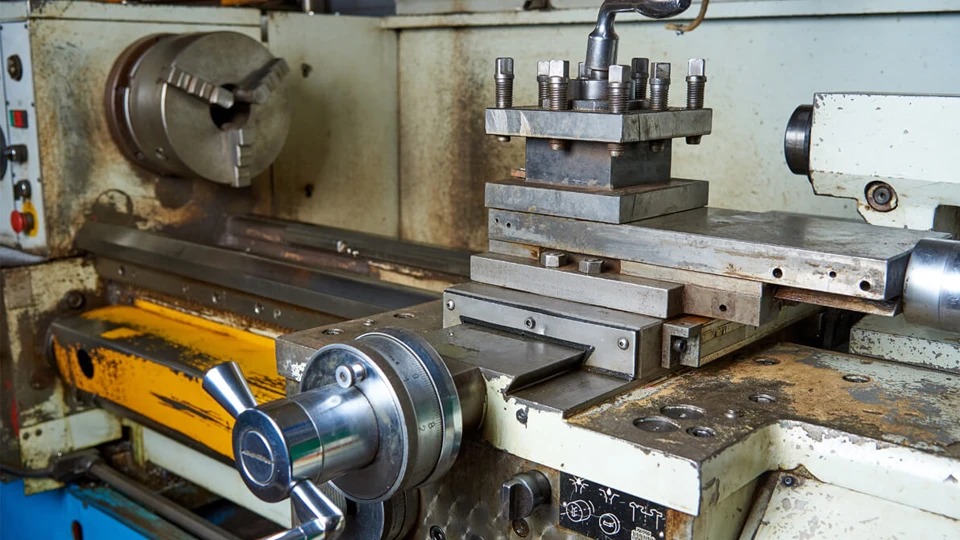
Skill Requirements and Learning Curve
The skill sets for CNC Machining vs Manual Machining differ significantly, and the time required to master each method also varies. Choosing between them often depends on the workforce’s current capabilities and the company’s training resources.
CNC Machining Skills
Operating CNC equipment requires both programming and machine operation knowledge. Machinists must understand G-code, the language that controls tool movements, and be proficient with CAM software to convert CAD models into efficient machining programs. Skills in tool setup, including offsets and compensation for tool wear, are essential to maintain accuracy. Process optimization is another key area—adjusting feeds, speeds, and tool paths to balance cycle time and surface quality. Modern CNC environments also demand familiarity with multi-axis programming, probing systems for in-process inspection, and troubleshooting alarms from the control interface.
Manual Machining Skills
Manual machining relies on the operator’s direct control and craftsmanship. Precision measuring tools such as micrometers, calipers, and dial indicators are used frequently to verify dimensions during machining. A strong sense of cutting feel is critical—experienced machinists can detect tool wear or improper feed rates by sound, vibration, or resistance at the handwheel. Knowledge of feed control, spindle speed selection, and appropriate cutting tools for different materials ensures consistent results. Material behavior during cutting—such as work hardening in stainless steel—must be understood to avoid poor finishes or premature tool wear.
Why Hybrid Skills Matter
In many workshops, the most valuable machinists are those who can operate both CNC and manual machines. Hybrid skills allow an operator to program a CNC for batch production and then switch to a manual lathe or mill for urgent modifications or one-off parts. This flexibility reduces downtime and improves responsiveness to customer needs. Additionally, manual machining experience often enhances CNC programming decisions—understanding how cutting forces, tool geometry, and workholding affect results leads to better tool paths and fewer setup errors. In a competitive manufacturing environment, operators with cross-training can significantly improve workflow efficiency and problem-solving capabilities. In custom automotive workshops, hybrid-skilled machinists can rework CNC-produced parts on manual machines within hours, avoiding production delays.
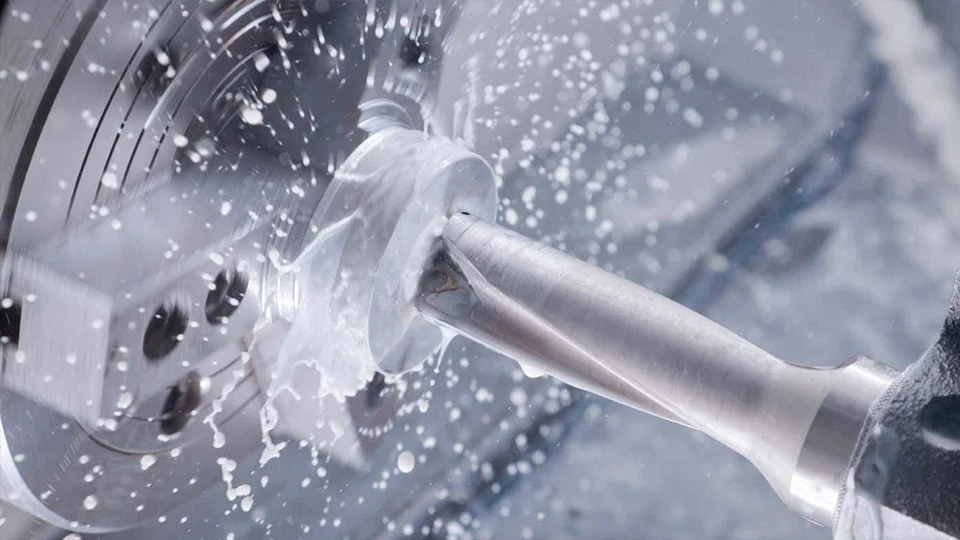
Maintenance and Reliability
In evaluating CNC Machining vs Manual Machining, the long-term reliability and maintenance workload of each type of equipment are key factors. Proper upkeep not only extends machine life but also minimizes downtime that could impact delivery schedules.
CNC Maintenance Requirements
CNC machines rely on a combination of mechanical and electronic systems, making their maintenance more complex. Regular checks of the electrical control system and servo drives are necessary to ensure smooth axis movement and accurate positioning. The lubrication system must be monitored to prevent premature wear on ball screws, linear guides, and spindle bearings. Precision calibration, including laser or ball bar testing, should be performed periodically to maintain micron-level tolerances. Software updates and control parameter backups are also part of preventive maintenance, ensuring the machine runs reliably and programs are not lost during power failures or system faults. Regular inspection of the coolant system and filtration units prevents overheating, improves surface finish, and extends tool life.
Manual Machine Maintenance
Manual machines have simpler systems but still require consistent attention. Mechanical transmission components such as lead screws, gears, and clutches need periodic inspection for wear and lubrication. Guideways must be kept clean and oiled to maintain smooth motion and prevent scoring on mating surfaces. Common wear parts, including belts, bushings, and bearings, should be replaced before they fail to avoid extended downtime. While these maintenance tasks are less technical than CNC servicing, neglecting them can lead to reduced accuracy and a shorter machine lifespan.
Downtime and Production Impact
The impact of downtime differs greatly between CNC and manual machines. A CNC machine outage in a high-volume production line can halt output for an entire batch, potentially delaying multiple orders and affecting delivery commitments. Because CNC setups are often optimized for specific jobs, switching production to another machine can be time-consuming. In contrast, manual machine downtime usually affects only the current workpiece, but the inherently slower production speed limits overall throughput. In mixed-production environments, maintaining both machine types in good condition helps balance production capacity and reduces the risk of bottlenecks.

Application Scenarios and Industry Use Cases
When deciding between CNC Machining vs Manual Machining, real-world applications often reveal the strengths of each method more clearly than technical specifications alone. Different industries and project types demand different capabilities, making it essential to match the process to the job.
CNC Machining Best Fits
CNC machining excels in industries where precision, repeatability, and complex geometries are critical. In aerospace, it is used to produce structural components, turbine blades, and precision housings where tolerances can be within ±0.005 mm. Medical device manufacturing relies on CNC for titanium implants, orthopedic screws, and dental components that must meet stringent biocompatibility and dimensional standards. Precision mold making also benefits from CNC’s ability to machine hardened tool steel with intricate cavity designs and consistent surface finishes. In the automotive sector, CNC enables efficient production of thousands of identical engine and transmission components, ensuring uniform quality across all units. Increasingly, aerospace suppliers are integrating additive manufacturing with CNC machining to further reduce weight and material waste.
Manual Machining Best Fits
Manual machining remains relevant where flexibility, quick turnaround, and lower setup costs are priorities. Repair shops frequently use manual lathes and mills to restore worn shafts, re-cut threads, or modify existing components without the delay of creating CNC programs. Prototyping environments value manual machines for their ability to quickly produce one-off parts that may undergo multiple design changes. In small-batch production, especially for custom equipment, manual machining can be more cost-effective due to its minimal tooling and setup time. Artistic metalworking, such as custom sculptures or decorative engravings, often depends on manual craftsmanship to achieve a unique, hand-finished appearance.
Hybrid Workshop Strategy
Many modern workshops integrate both CNC and manual machines to maximize efficiency and adaptability. For example, a tooling manufacturer might use CNC machining centers to produce high-precision mold inserts in batches, then use manual mills for last-minute modifications or fine-tuning during assembly. In custom automotive workshops, CNC lathes can turn precision engine components, while manual machines handle specialized brackets or fixtures that require quick adjustments. This hybrid approach minimizes downtime, improves responsiveness to urgent orders, and ensures that both large-scale production and specialized work can be completed without outsourcing.
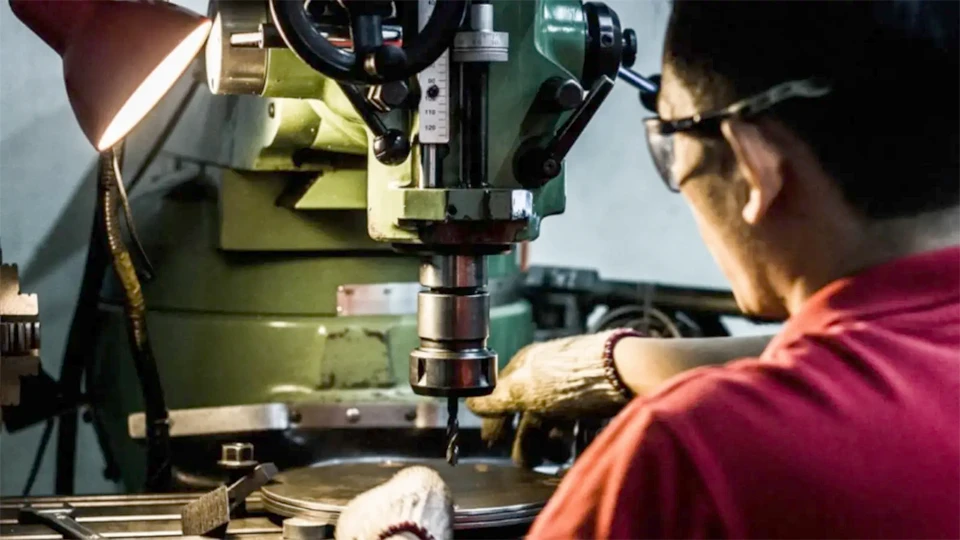
Environmental and Energy Considerations
When comparing CNC Machining vs Manual Machining, energy use and environmental impact have become increasingly important decision factors, especially in industries focused on sustainable manufacturing and cost control.
Energy Efficiency
CNC machines typically have lower energy consumption per finished part in high-volume production because optimized cutting parameters and efficient tool paths minimize idle spindle time. However, their standby power draw can be significant, as control systems, servo drives, and cooling units remain active even when not cutting. This means that in low-utilization scenarios, energy waste can accumulate. Manual machines generally consume more power per part due to slower production speeds and less efficient material removal, but their standby energy usage is negligible because most systems are mechanically driven and only draw power when in operation. For factories aiming to improve overall energy efficiency, high CNC utilization rates are key to offsetting their higher baseline power demand.
Material Waste Reduction
CNC machining can significantly reduce material waste through precise tool path optimization and adaptive cutting strategies. CAM software can calculate the most efficient way to remove material, minimizing excess stock and improving material utilization rates. This is especially valuable when working with expensive alloys like titanium or Inconel.
Manual machining, on the other hand, often requires larger initial stock sizes to account for setup variations and operator adjustments, resulting in more scrap. The lack of automated path optimization also means that more material may be removed than necessary, increasing waste disposal requirements and material costs. In industries where raw materials represent a large share of production expenses, CNC’s higher material efficiency directly contributes to both cost savings and environmental sustainability. In aerospace component manufacturing, CNC optimization can reduce raw material waste by up to 20%, significantly lowering both costs and environmental impact.
Final Side-by-Side Comparison Table
After reviewing each aspect of CNC Machining vs Manual Machining, the following table summarizes the core differences across technical performance, cost, skills, and practical applications.
| Criteria | CNC Machining | Manual Machining |
|---|---|---|
| Precision | Micron-level tolerances achievable; consistent quality across large batches | Dependent on operator skill; variation possible between parts |
| Surface Finish | Stable cutting conditions and automated compensation deliver high-quality finishes (Ra 0.8–3.2 μm typical) | Finish quality varies with operator control and tool condition |
| Speed & Throughput | Multi-axis capability, automatic tool changers, and optimized tool paths enable high production rates | Slower due to manual tool changes, part repositioning, and limited simultaneous operations |
| Complex Geometry Capability | Can machine intricate shapes, compound curves, and multi-surface features | Limited to simpler shapes; complex features require more setups and skill |
| Initial Investment | Higher purchase cost; includes software, training, and setup | Lower purchase cost; minimal setup requirements |
| Operational Costs | Lower labor requirement; suitable for lights-out production; higher standby power draw | Higher labor requirement; negligible standby power usage |
| Material Efficiency | Optimized cutting paths minimize waste; especially valuable for expensive alloys | Larger stock allowance increases waste; less efficient use of material |
| Skill Requirements | G-code programming, CAM operation, tooling setup, and process optimization | Precision measuring, cutting feel, feed and speed control, material experience |
| Maintenance | Involves both electronic and mechanical systems; requires calibration and software updates | Primarily mechanical maintenance; simpler upkeep |
| Best Applications | Aerospace components, medical implants, precision molds, mass-produced automotive parts | Repair work, prototypes, custom one-offs, artistic metalworking |
| Hybrid Use Advantage | Efficient high-volume production with flexibility for last-minute changes when combined with manual machining | Complements CNC by enabling quick adjustments and specialized work |
Conclusion – Choosing the Right Method for You
CNC Machining vs Manual Machining is not about choosing one and rejecting the other—it’s about understanding where each shines. The precision, repeatability, and scalability of CNC make it the backbone of modern mass production, while the flexibility and hands-on control of manual machining keep it indispensable for custom work, repairs, and rapid changes. The real advantage comes from matching the method to the task, balancing technology with craftsmanship. For many manufacturers, the smartest strategy is not “CNC or manual,” but “CNC and manual,” working together to deliver quality, efficiency, and adaptability in a single production workflow.
For manufacturers seeking both high-performance CNC capabilities and dependable manual machining solutions, partnering with a supplier that understands both worlds can make all the difference. With decades of engineering experience, Rosnok designs and builds precision CNC lathes, machining centers, and manual machine tools to meet the needs of aerospace, automotive, medical, and custom manufacturing sectors. By combining advanced automation technology with proven craftsmanship, we help our customers achieve consistent quality, efficient production, and the flexibility to adapt to any challenge their industry demands.

